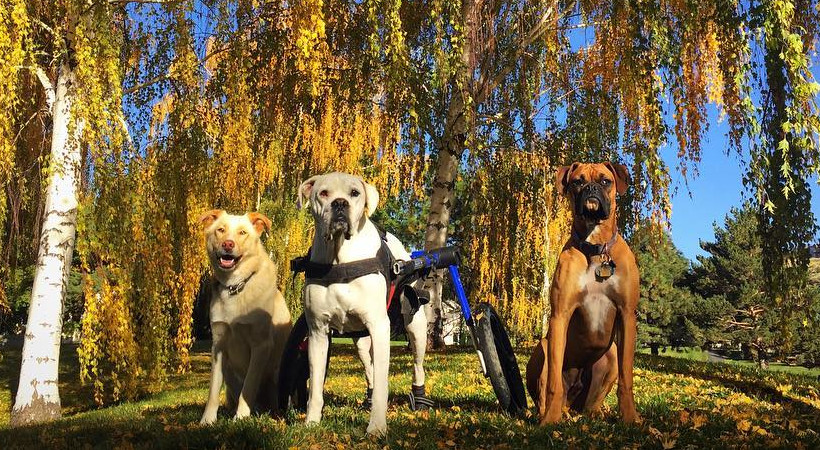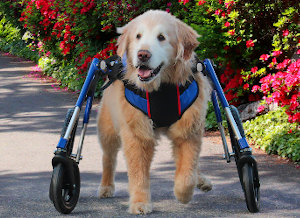Separation anxiety refers to a mental condition that mostly affects dogs, which results from a prolonged detachment of the dog from his owner.
According to the American Society for the Prevention of Cruelty to Animals, separation anxiety is one of the leading complaints among pet parents. Dogs with this condition generally exhibit escapist tendencies, self-destructive behavior, and heightened anxiety.
Causes of Separation Anxiety in Dogs
Separation anxiety mostly occurs when a dog owner leaves for extended durations but doesn’t make enough provisions for their pooch to stay stimulated in their absence. As such, the dog suffers from boredom and loneliness, which eventually culminates in self-destructive behavior.
Other possible causes of separation anxiety include;
- Leaving a dog alone for the first time
- Poor training
- Premature adoption
- New socialization patterns
- Routine changes, such as moving homes, changes in pet parents, the loss of a close family member, or the introduction of a new pet
- Genetic predisposition
- Certain medical conditions, especially mental conditions or diseases that manifest in persistent pain
Dogs with post-traumatic stress disorder (PTSD) are at higher risk of developing separation anxiety. It only takes a few minutes of loneliness for such dogs for the traumatic episodes to begin playing out in their minds. Without a proper way to handle the intrusive memories, the dog may resort to self-destructive behaviors.
But even without a history of PTSD, separation anxiety might still occur when a dog has too much pent-up energy and not enough ways to release it.
Symptoms of Separation Anxiety in Dogs
Separation anxiety mostly occurs when a dog owner leaves for extended durations but doesn’t make enough provisions for their pooch to stay stimulated in their absence. As such, the dog suffers from boredom and loneliness, which eventually culminates in self-destructive behavior.
Other possible causes of separation anxiety include;
- Leaving a dog alone for the first time
- Poor training
- Premature adoption
- New socialization patterns
- Routine changes, such as moving homes, changes in pet parents, the loss of a close family member, or the introduction of a new pet
- Genetic predisposition
- Certain medical conditions, especially mental conditions or diseases that manifest in persistent pain
Dogs with post-traumatic stress disorder (PTSD) are at higher risk of developing separation anxiety. It only takes a few minutes of loneliness for such dogs for the traumatic episodes to begin playing out in their minds. Without a proper way to handle the intrusive memories, the dog may resort to self-destructive behaviors.
But even without a history of PTSD, separation anxiety might still occur when a dog has too much pent-up energy and not enough ways to release it.
What Are the Treatment Options?
The treatment options for separation anxiety in dogs generally target the underlying cause of the disease.
Usually, the end goal is to ensure that the dog can enjoy or at least tolerate a few hours of loneliness. However, certain solutions also seek to ensure that the animal never suffers loneliness in the first place.
Some of the treatment options include:
1. Training the Dog
Some dogs cannot tolerate being alone because they’re not properly trained on handling loneliness. Training your dog to enjoy being by himself from time to time may go a long way in preventing separation anxiety.
As with most training, it’s advisable to train your dog to get used to being alone while he’s still young. If possible, hire a professional dog trainer for this.
You might also introduce your dog to other dogs in the neighborhood so that they can play together in your absence without causing trouble2
2. Exercising the Dog
Some dogs suffer from separation anxiety because they have excessive pent-up energies and cannot figure out a way to release them. This is mostly the case with hyperactive dog breeds, such as beagles and Chihuahuas.
If you’re blessed with such dog breeds, your best bet is to tire down your dog through exercise continually. Go for a walk or run in the neighborhood with your dog often.
You might also consider playing the fetch game with your pooch or going for a dip together (provided that your canine friend isn’t hydrophobic).
3. Offer Enough Toys
It doesn’t matter how well you exercise your dog. If you’re usually gone for extended durations, the dog will invariably get bored in your absence and possibly suffer separation anxiety. Therefore, offer your dog enough toys to keep him physically and mentally stimulated even in your absence.
Some of the best toys to buy include laser-pointed toys, food puzzles, or interactive ball launchers. The more engaging the toy is, the better.
It’s also advisable to keep lights, as well as the radio and television, switched on during your absence. It creates the illusion that someone is home and makes the dog less anxious.
4. Consider Anti-Anxiety Supplements
There are numerous anxiolytic supplements that you can also administer to your dog to reduce separation anxiety, such as cannabidiol (CBD).
CBD is an extract from the cannabis plant whose anti-anxiety properties are well-documented. The substance relieves anxiety by improving your dog’s signaling of happiness chemicals like serotonin.
One of the best reasons to offer your dog CBD for anxiety relief is that there are plenty of products to experiment with. You can opt for best CBD gummies for anxiety, CBD oil tinctures, or CBD-infused pills. What’s more – cannabidiol won’t leave your dog nursing any serious side effects.
Separation anxiety is one of the most debilitating mental conditions that your dog can ever suffer from. Fortunately, there are numerous treatment options, most of which are home-based. Just remember to consult your vet if the symptoms persist despite applying any of the solutions mentioned above.
References:
https://www.aspca.org/pet-care/dog-care/common-dog-behavior-issues/separation-anxiety
https://www.ncbi.nlm.nih.gov/pmc/articles/PMC6319597/

Related Articles:
Did we answer all your questions on "Separation Anxiety"?












[…] at objects is a way of seeking comfort. Another issue that can lead to bad chewing habits include separation anxiety. If you notice that most of the biting occurs when you are not around, your puppy may be having a […]
[…] The originating cause of your dog’s anxiety is not always apparent, but it usually stems from a history of abuse, neglect or abandonment, or an experience of heightened vulnerability (such as experiencing a trauma or disability). It can start as older age creeps in, or begin as a pup when you leave the house for the day and they experience separation anxiety. […]